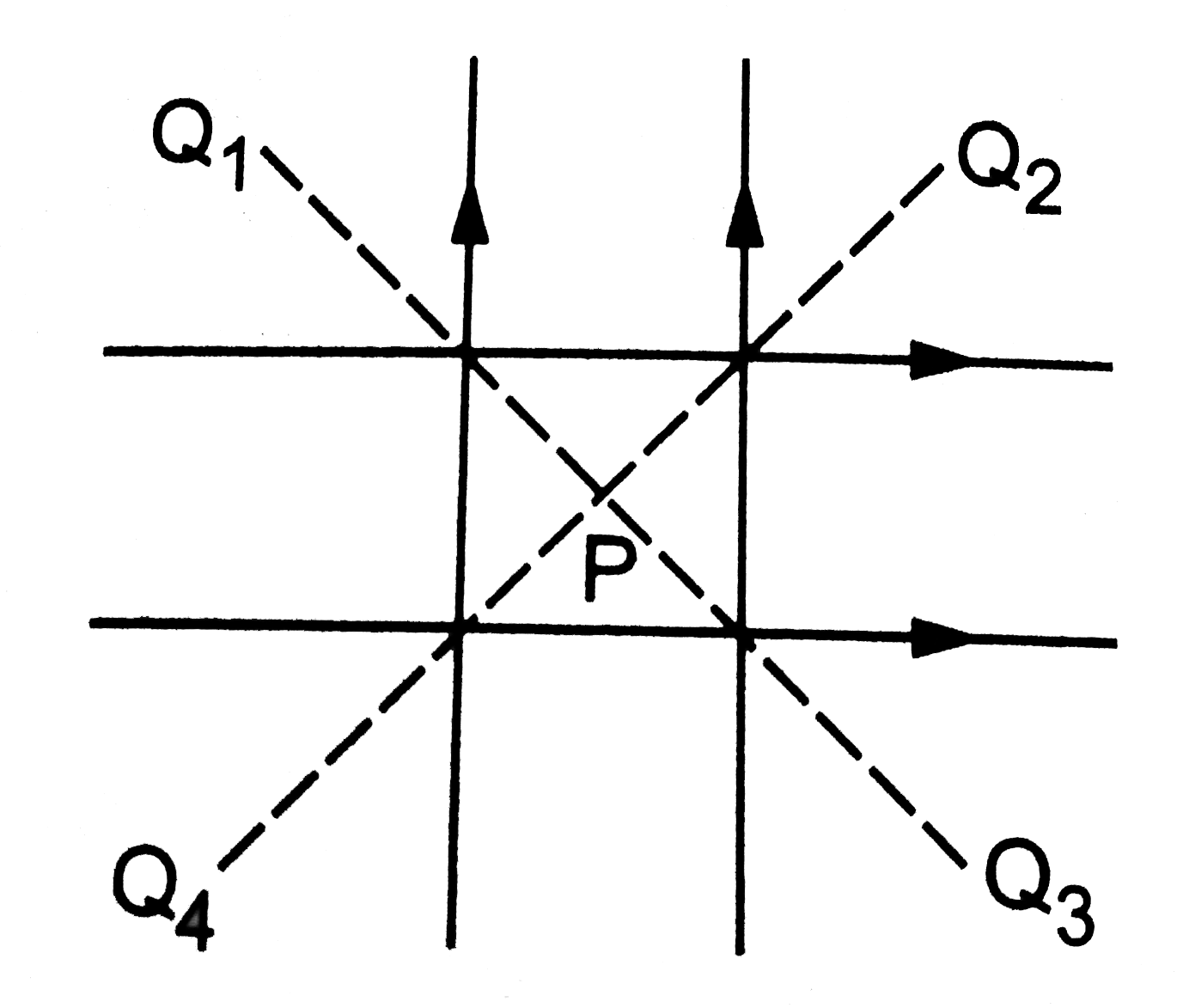P is the point of intersection of the diagonals of a square READ. P is equidistant from ______
the vertices R, E,A and D
¯¯¯¯¯¯RE and ¯¯¯¯¯¯EA
¯¯¯¯¯¯EA and ¯¯¯¯¯¯AD
All of these
The correct Answer is:D
Given, P is the points of intersection of the diagonal of a squre READ.
In a square, diagonals are equal and bisect to each other.
∴ P is equidistant from the vertices.
As P lies on the diagonals, P is equidistant from any two adjacentt sides.
∴ Hence the correct answer is option (d)
Topper's Solved these Questions
- LOCUSBOOK - PEARSON IIT JEE FOUNDATIONCHAPTER - LOCUSEXERCISE - level 2
15 Videos
- LINEAR EQUATIONS AND INEQUATIONSBOOK - PEARSON IIT JEE FOUNDATIONCHAPTER - LINEAR EQUATIONS AND INEQUATIONSEXERCISE - level 3
10 Videos
- LOGARITHMSBOOK - PEARSON IIT JEE FOUNDATIONCHAPTER - LOGARITHMSEXERCISE - Level 3 MCQ
15 Videos
Similar Questions
Knowledge Check
The point of intersection of diagonals of a square ABCD is at the origin and one of its vertices is at a(4,2). What is the equation of the diagonal BD?
A2x+y=0B2x−y=0Cx+2y=0Dx−2y=0The magnetic field at the point of intersection of diagonals of a square loop of side L carrying a current I is :
Aμ0LπLBμ0LπLC√2μ0LπLD2√2μ0LπLThe magnetic field at the point of intersection of diagonals of a square loop of side L carrying a current I is :
Aμ0LπLBμ0LπLC√2μ0LπLD2√2μ0LπL
Four long, straight wires, each carrying a current of 5.0 A, are placed in a plane as shown in figure . The points of intersection form a square of side 5.0 cm. (a) Find the magnetic field at the centre P of the square. (b) Q1,Q2,Q3andQ4 are points situated on the diagonals of the square and at a distance from P that is equal to the length of the diagonal of the square. Find the magnetic fields at these points.

View SolutionThe magnetic field at the point of intersection of diagonals of a square wire loop of side L, carrying a current I is
View SolutionPoint of intersection of the diagonals of square is at origin and coordinate axis are drawn along the diagonals. If the side is of length a, then one which is not the vertex of square is :
View SolutionThe point of intersection for the diagonals AC and BD of the cyclic quadrilateral ABC is P. If ∠APB=64∘ and ∠CBD=28∘, the measure of ∠ADB is
View SolutionABDC is a parallelogram and P is the point of intersection of its diagonals. If O is any point, then ¯¯¯¯¯¯OA+¯¯¯¯¯¯OB+¯¯¯¯¯¯OC+¯¯¯¯¯¯OD=
View Solution
